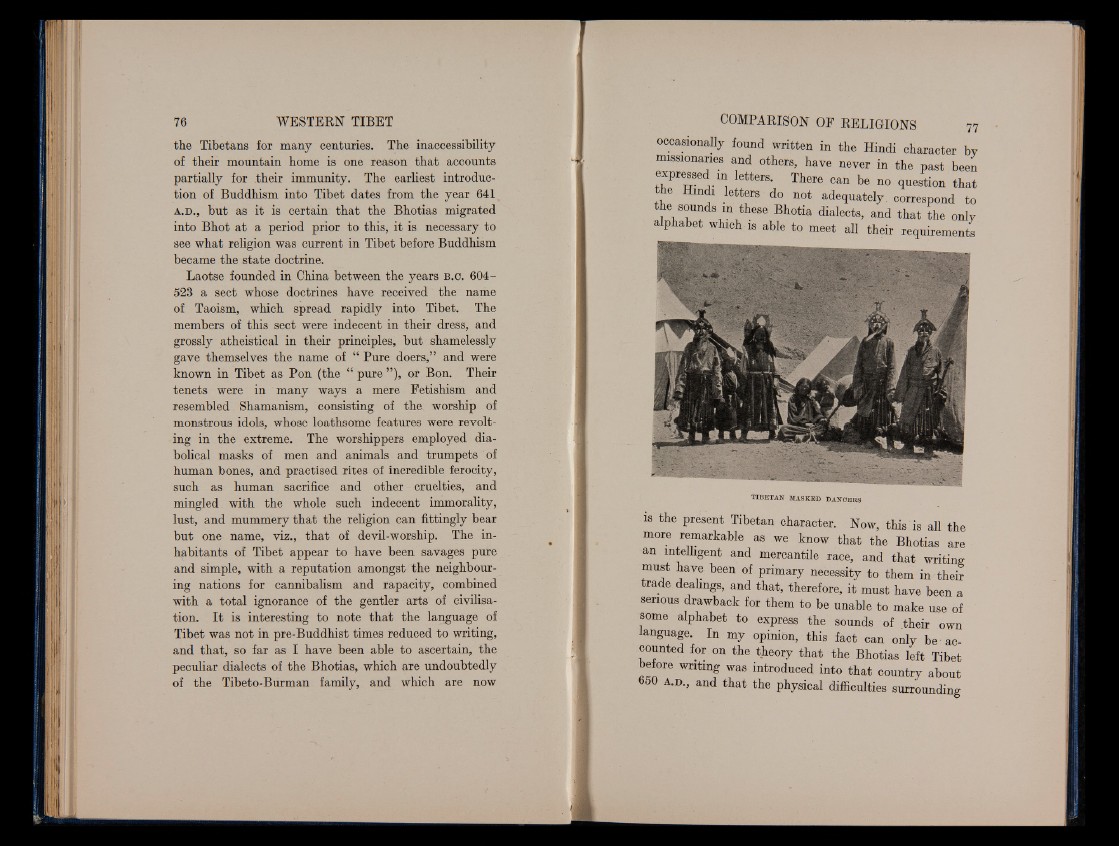
the Tibetans for many centuries. The inaccessibility
of their mountain home is one reason that accounts
partially for their immunity. The earliest introduction
of Buddhism into Tibet dates from the year 641
a.d., but as it is certain that the Bhotias migrated
into Bhot at a period prior to this, it is necessary to
see what religion was current in Tibet before Buddhism
became the state doctrine.
Laotse founded in China between the years B.C. 604-
523 a sect whose doctrines have received the name
of Taoism, which spread rapidly into Tibet. The
members of this sect were indecent in their dress, and
grossly atheistical in their principles, but shamelessly
gave themselves the name of “ Pure doers,” and were
known in Tibet as Pon (the “ pure ” ), of Bon. Their
tenets were in many ways a mere Fetishism and
resembled Shamanism, consisting of the worship of
monstrous idols, whose loathsome features were revolting
in the extreme. The worshippers employed diabolical
masks of men and animals and trumpets of
human bones, and practised rites of incredible ferocity,
such as human sacrifice and other cruelties, and
mingled with the whole such indecent immorality,
lust, and mummery that the religion can fittingly bear
but one name, viz., that of devil-worship. The inhabitants
of Tibet appear to have been savages pure
and simple, with a reputation amongst the neighbouring
nations for cannibalism and rapacity, combined
with a total ignorance of the gentler arts of civilisation.
I t is interesting to note that the language of
Tibet was not in pre-Buddhist times reduced to writing,
and that, so far as I have been able to ascertain, the
peculiar dialects of the Bhotias, which are undoubtedly
of the Tibeto-Burman family, and which are now
occasionally found written in the Hindi character by
missionaries and others, have never in the past been
expressed m letters. There can be no question that
mdi letters do not adequately, correspond to
the sounds m these Bhotia dialects, and that the only
alphabet which is able to meet all their requirements
TIBETAN MASKED DANCERS
is the present Tibetan character. Now, this is all the
more remarkable as we know that the Bhotias are
an intelligent and mercantile race, and that writing
must have been of primary necessity to them in their
rade dealings, and that, therefore, it must have been a
serious drawback for them to be unable to make use of
some alphabet to express the sounds of their own
language. In my opinion, this fact can only be -accounted
for on the theory that the Bhotias left Tibet
before writing was introduced into that country about
650 a.d., and that the physical difficulties surrounding